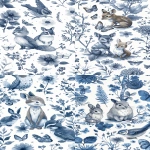Explore the Best AI Image Gallery

Quantum Leaps: How Quantum Computing is Transforming Creativity
The realm of creativity has always been a playground for innovation, pushing boundaries and redefining imagination. But with the emergence of quantum computing, we are witnessing a paradigm shift, unlocking possibilities previously confined to science fiction. This revolutionary technology, harnessing the principles of quantum mechanics, promises to reshape the creative landscape, empowering artists, designers, and innovators to explore uncharted territories.
Quantum Computing: A New Creative Frontier
Unlike classical computers that process information in bits (0 or 1), quantum computers leverage qubits, which can exist in a superposition of both states simultaneously. This unique capability allows them to perform calculations at an exponentially faster rate, opening doors to unprecedented creative potential.
Unleashing Artistic Innovation
Quantum computing has the power to revolutionize artistic expression by:
- Generative Art: Quantum algorithms can generate intricate and complex patterns, textures, and even entire artworks, pushing the boundaries of artistic creation.
- Interactive Experiences: Imagine art installations that respond dynamically to viewer emotions or movements, creating immersive and personalized experiences through quantum-powered simulations.
- Novel Materials and Design: Quantum simulations can aid in the design of new materials with unique properties, leading to innovative artistic expressions in sculptures, textiles, and architectural structures.
Empowering Design and Innovation
Beyond art, quantum computing is poised to transform design processes across various industries:
- Product Development: Quantum simulations can optimize product designs, considering factors like material properties, stress distribution, and user interaction, leading to more efficient and aesthetically pleasing creations.
- Fashion Design: Quantum algorithms can generate novel patterns, textures, and garment configurations, enabling designers to explore innovative styles and personalized apparel.
- Architecture and Urban Planning: Quantum simulations can optimize building designs for energy efficiency, structural integrity, and aesthetic harmony, shaping the future of cities.
Navigating Ethical Considerations
As with any powerful technology, quantum computing raises ethical considerations that require careful attention:
- Bias in Algorithms: Ensuring fairness and mitigating bias in quantum algorithms used for creative applications is crucial to prevent discriminatory outcomes.
- Copyright and Ownership: The question of ownership and copyright arises when AI-generated art becomes more prevalent, demanding new legal frameworks and ethical guidelines.
- Accessibility and Equity: Making quantum computing resources accessible to a diverse range of creators is essential to foster inclusivity and prevent a widening gap in creative opportunities.
The Future of Quantum Creativity
Quantum computing is still in its early stages, but its potential impact on creativity is undeniable. As the technology matures, we can expect:
- Increased Collaboration: Quantum platforms will facilitate collaboration between artists, designers, and scientists, fostering cross-disciplinary innovation.
- Democratization of Creativity: User-friendly quantum tools will empower individuals with limited technical expertise to explore creative possibilities.
- Emergence of New Artistic Forms: Quantum computing will undoubtedly inspire the creation of entirely new art forms, pushing the boundaries of human imagination and expression.
The fusion of quantum computing and creativity heralds a new era of artistic exploration, where the impossible becomes possible. By embracing this transformative technology responsibly, we can unlock a future where creativity knows no bounds.
















](https://images.ai-img.art/thumbnails/150/3b84ca326019629590ea86b548ae82c12f8a9bf6b8cea7d571c5fdc0c4752b43.webp)











](https://images.ai-img.art/thumbnails/150/fcc50fa1088fe199c5704d70940ce4cbc530197e79f0325326ba6d4b3843e81f.webp)
](https://images.ai-img.art/thumbnails/150/0fe6d58142264df0725c5d15bd2d542251402ee71eee1e07b4706a2efe3996c1.webp)
](https://images.ai-img.art/thumbnails/150/eed3486f4733acd9bb456a7911ec8345a407e0e5895b88a651224ce0ed1299d6.webp)
](https://images.ai-img.art/thumbnails/150/ec0352971abf8503c0f524dde5e318e44c377bd6394a6a42d76f674429134500.webp)

](https://images.ai-img.art/thumbnails/150/79e7fc4657a608bed2cf18ea45b36f3382a5cfd774660513a7a42757a90f89ea.webp)


](https://images.ai-img.art/thumbnails/150/949fb2340cd0f43f0bf5a787c7dc29e2f377f2ee6566be4d9d81b973eb59308e.webp)










](https://images.ai-img.art/thumbnails/150/47ccaae01b4161616ffbf24d86d84d7d93318c14bd85f55ff3dc2f3ea3664cce.webp)

